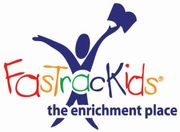Kids may be ready for math earlier than you think, new research suggests

Dear Parents,
I read this very interesting article about children's capacity to understand complex math at an early age. It seems like under common core standards, these studies have certainly already been factored in.
There is no time to waste as a child must now start earlty if they are to suceed in School. Good thing the Eye-Level Math Program is the most child friendly program out there so take advantage and start young!
Kids may be ready for math earlier than you think, new research suggests
By Lyndsey Layton, Published: December 17
Children as young as 3 can understand the meaning and value of multi-digit numbers and might be more ready for direct math instruction when they begin formal schooling than previously believed, according to new research by developmental psychologists.
“Contrary to the view that young children do not understand place value and multi-digit numbers, we found that they actually know quite a lot about it,” said Kelly Mix, a professor of educational psychology at Michigan State University and a lead investigator on the study.
“They certainly haven’t mastered it, but the new insight is that they can pick up on patterns, start to make inferences, and they’re starting kindergarten with a lot more partial knowledge than what people have believed,” said Mix, who worked with Richard Prather and Linda Smith, both of Indiana University.
The research comes as teachers, policymakers and government officials have been increasingly dismayed by U.S. students’ math performance on internationally benchmarked exams. This month, the results of a well-regarded international exam placed U.S. teenagers at below average in math compared with their counterparts in 64 other countries and economies.
Educators and researchers have long assumed that children do not have the capacity to fully understand place value and to accurately compute multi-digit numbers until at least second grade. The ability to add and subtract multi-digit numbers is a gateway skill, an important prerequisite for higher-order math.
Researchers had dismissed the abilities of younger children to handle multi-digit numbers because they make frequent errors. But Mix said those kinds of errors are often “intelligent” mistakes that belie at least a partial grasp of the underlying math.
What’s more, young learners can be taught to improve their calculations, she said. Funded with a $1.5 million grant from the U.S. Education Department and published this week in the journal Child Development, the research examined how well children ages 3 to 7 could identify and compare two- and three-digit numbers.
In one experiment, children were shown two numbers, such as 36 and 306, and were asked to name the larger number. They had a 50-50 chance of being correct. After the first several tries in which they guessed no better than chance, the kindergartners grew increasingly accurate. First- and second-graders did better than 50-50 from the start.
The researchers tested about 200 children from ethnically diverse, middle-income communities in Michigan and Indiana.
One surprising finding of the research was that when children were asked to compute with numerals, they performed significantly better than when they were given “manipulatives” — learning tools they could hold in their hands, such as blocks — or were shown visual arrays of numbers, such as dots in a box.
Classrooms across the country are stocked with “manipulatives” for children in younger grades, and educators have thought that young children have an easier time learning math if they can visualize or touch quantities. But that’s not so, Mix found.
“They can learn math faster with . . . numerals, which is counterintuitive,” she said. “We’ve always believed that younger children needed to learn through concrete models. But it turns out they can do it faster with symbolic numbers.”
Very young children learn math because they are continually exposed to multi-digit numbers, whether from telephone numbers or price tags. Mix said they might begin to understand numbers from language because adults are continually talking about numbers, whether they are commenting on a calendar, asking their children to push a number in an elevator or looking for a room number in an office building.
While the research suggests that kindergartners are ready for multi-digit math instruction, Mix said educators should take a balanced approach.
“A lot of educators believe strongly in the power of play in kindergarten and even first grade,” she said. “And I believe that, too. Kids need lots of time to discover and explore. I wouldn’t say we should teach second-grade math in kindergarten. But there is a risk in the other extreme, too. If you believe kindergartners are oblivious to the symbol system and we have to gradually introduce it, you’re missing out on the fact that they’re already picking it up.”
About the Business
(14 reviews)
Have a question? Ask the experts!
Send your question


